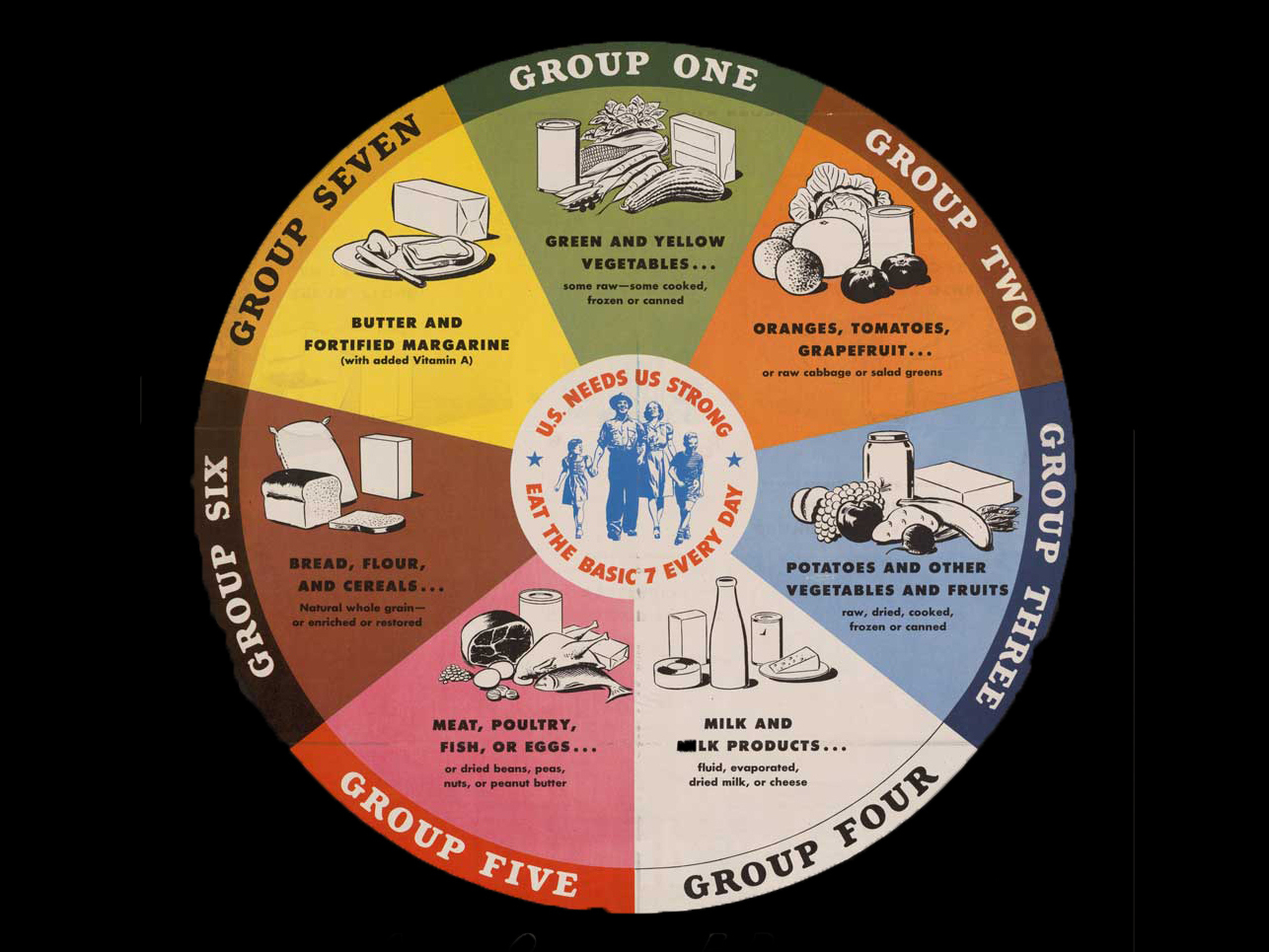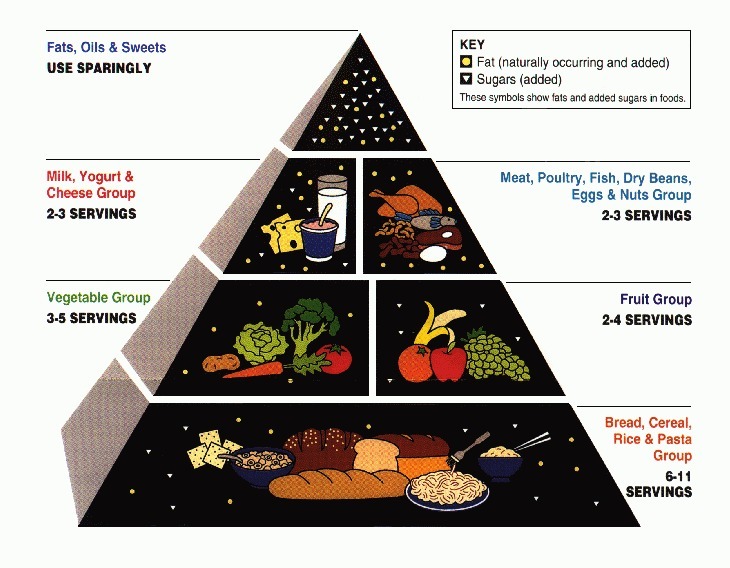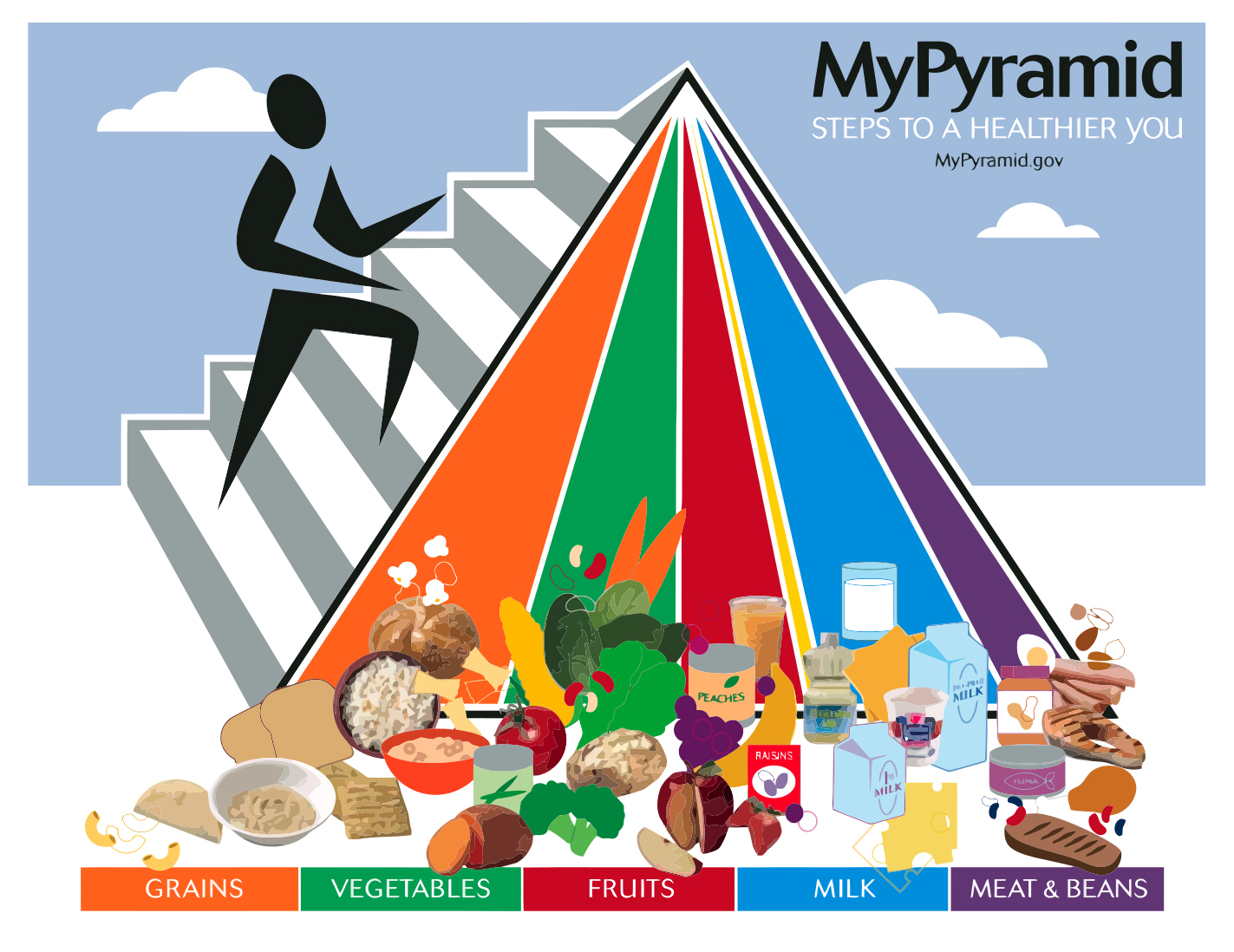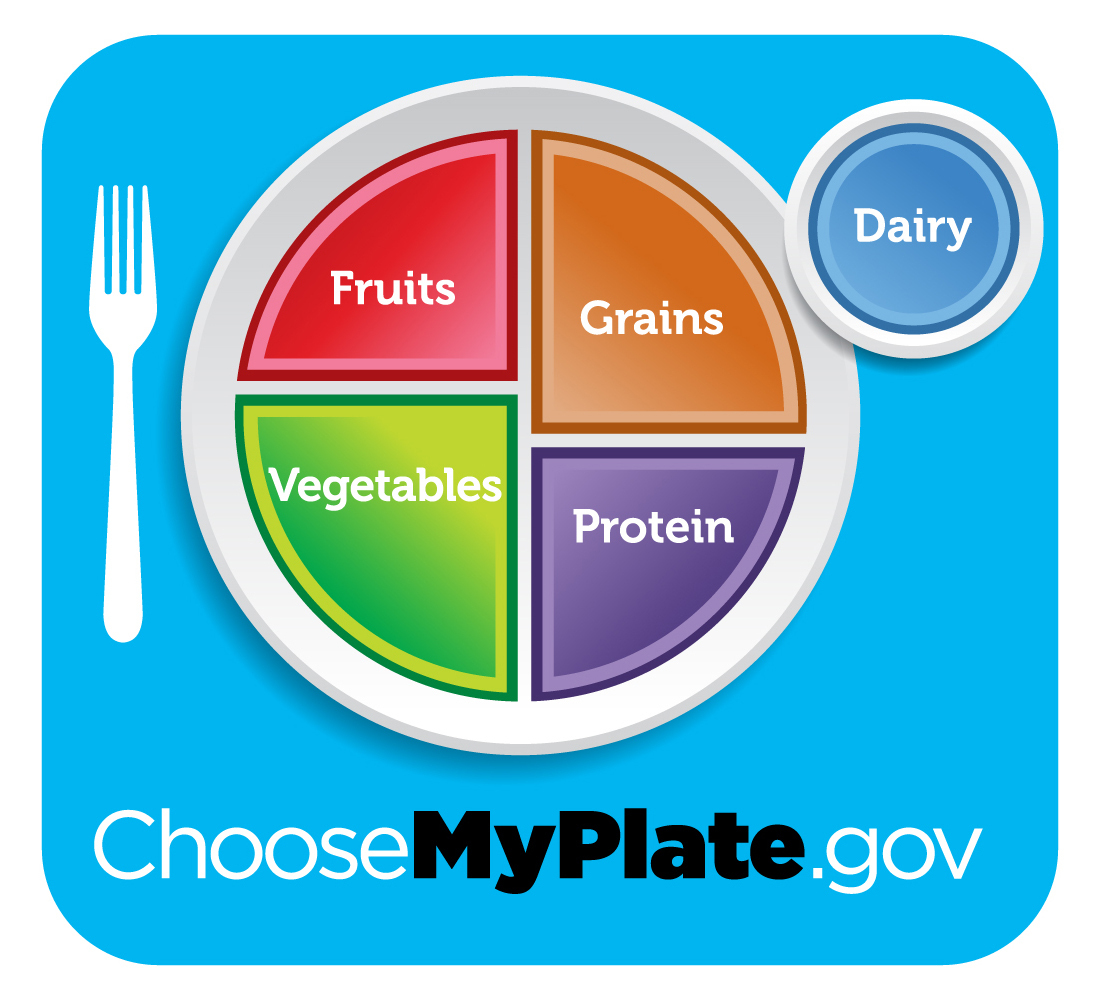The U.S. Department of Agriculture's first stab at offering nutrition advice came in 1894, when W. O. Atwater, a chemist and pioneering nutrition investigator for the agency, published this warning in a Farmer's Bulletin:
"Unless care is exercised in selecting food, a diet may result which is one-sided or badly balanced. ... The evils of overeating may not be felt at once, but sooner or later they are sure to appear..."
Thus began the USDA's long struggle to craft eating advice based on the latest scientific evidence. That science, of course, has evolved quite a bit since 1894 – a time when micronutrients like vitamins hadn't even been discovered.
As the science changed, so did the USDA's efforts to represent its best advice with visuals – sometimes, with amusing results to our modern eyes.
1943: The Basic 7
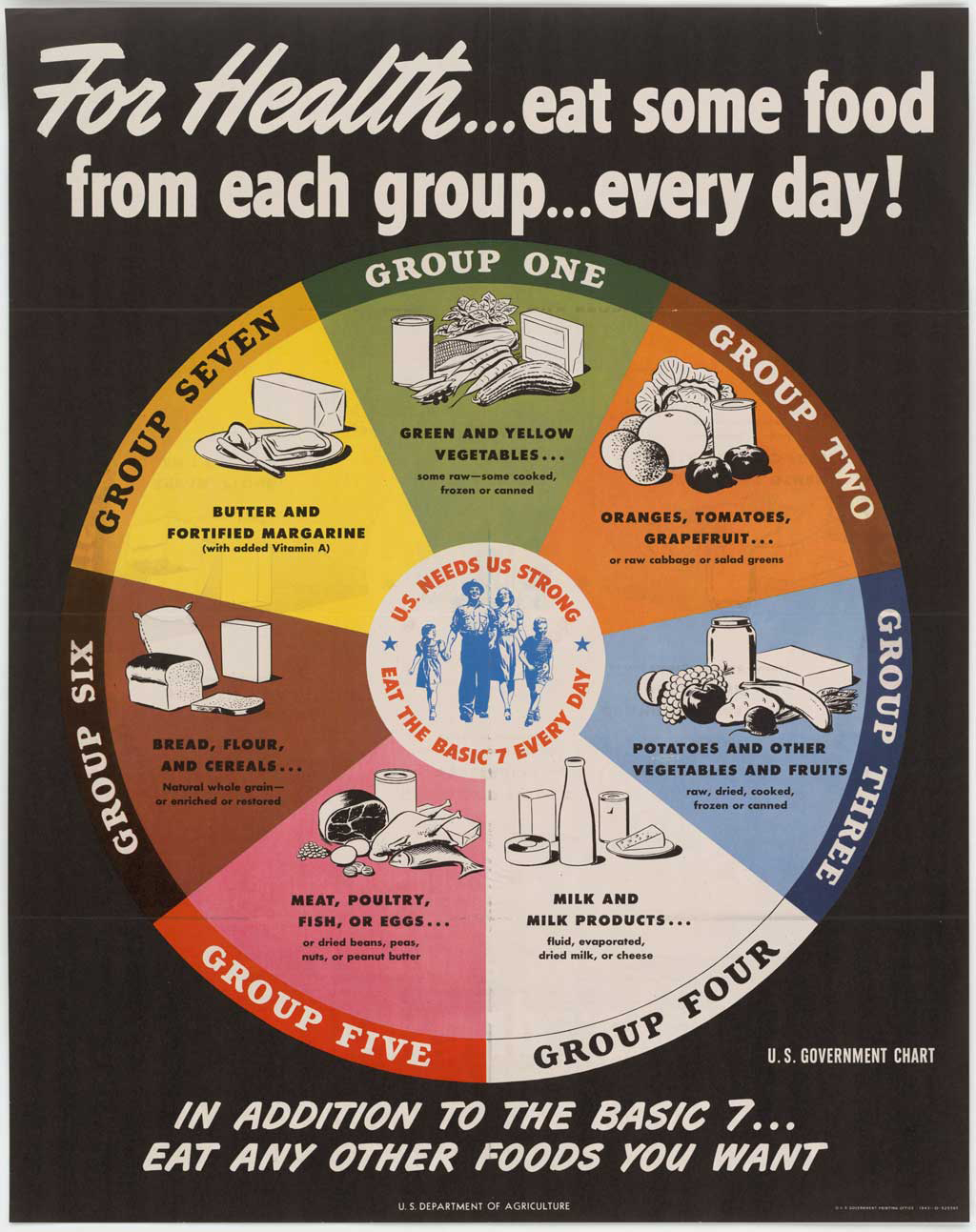
Along with margarine, butter gets a place of prominence in this food wheel from 1943 — when wartime butter shortages prompted many consumers to switch to margarine. It's hard to imagine either one playing a starring role in today's Dietary Guidelines, which still urge limits on saturated fats in foods like butter, and frown on margarine, which can be high in trans fats.
At first blush, butter is as prominent as the vegetables next to it. But look closely and you'll see fruits and vegetables in not one but three separate categories. While these guidelines were criticized at the time for lacking specific information on serving sizes, visually, at least, they seem to place a healthy emphasis on produce.
1956: The Basic 4
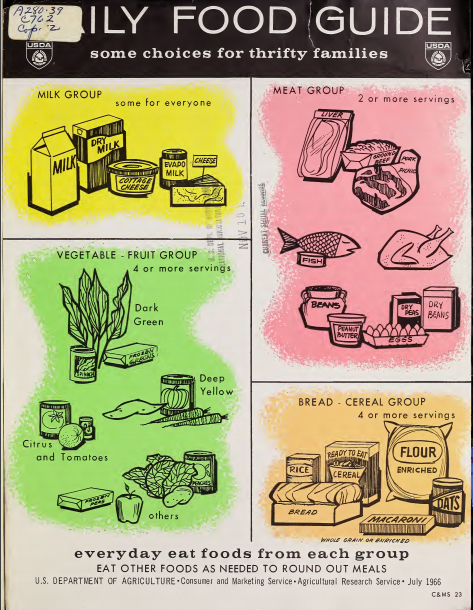
In the 1950s, the USDA put the Basic 7 on a diet and slimmed it down to the Basic 4 – which did offer recommended minimum servings. Widely used into the 1970s, this diet guide was designed to meet basic nutritional needs – the assumption was that Americans would eat more than what was laid out here.
1980: The Food Wheel
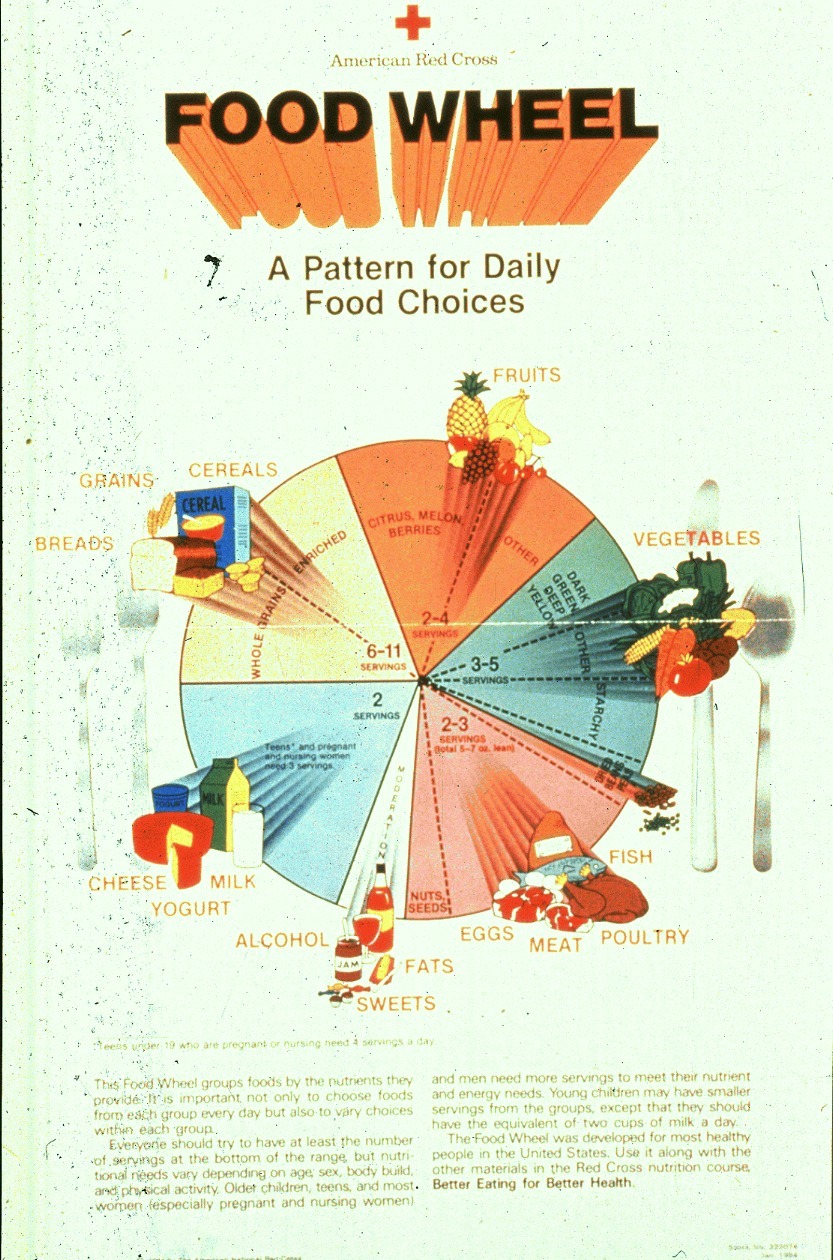
In the late 1970s, the focus of Uncle Sam's guidelines shifted – from getting enough of the right nutrients, to avoiding the wrong ones — as concerns rose about the links between diet and disease. Though there weren't a lot of data available, fat became a prime nutrient of concern.
